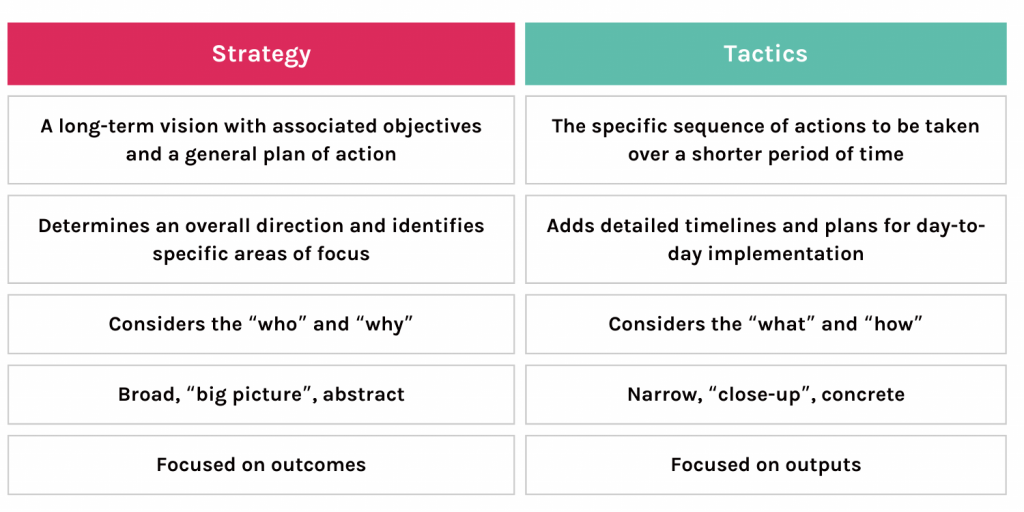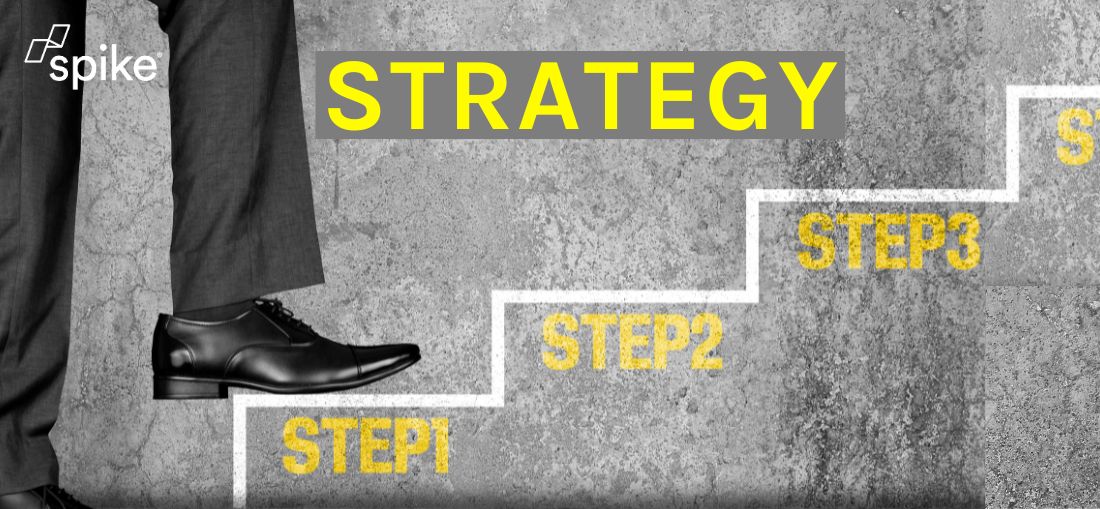If you’ve found yourself clicking on this article then there’s a good chance that you’re ready to take some steps to improve your approach to your digital marketing strategy.
The first three steps are all about understanding the root of the problem and seeing that there is a solution. When you’ve completed these steps, you’ll be ready to take some action to drive positive changes in your strategic thinking.
Step 1: We admitted we were powerless over our terminology – that our definitions had become unmanageable
On a daily basis, marketers probably use the word ‘strategy’ multiple times without ever really stopping to think about what it means – or even whether they’re using it correctly. I was at MeasureFest in Brighton recently, which was a fantastic event with brilliant speakers, but even some of them were using the word ‘strategy’ when they actually meant ‘tactics’. And the thing is, I know I’m just as guilty of it myself: I’ve used the word ‘strategy’ instead of ‘tactics’ at least twice in the past week, even though getting it wrong is something of a pet peeve. But when too many of us use terms like ‘strategy’, ‘planning’ and ‘tactics’ almost interchangeably, we blur the line between each of these terms – and that can cause real problems.
Step 2: Came to believe that these definitions mattered and could restore us to sanity
It may not seem like a big deal, especially because we probably think we know what we mean, but getting these definitions muddled leads to the “insanity” of siloed thinking, short-termism and, ultimately, underperformance against business goals. This lack of clarity inevitably leads to a focus on tactics as they are tangible and it’s fairly easy to show that they are having an impact. However, who’s to say that the impact of these actions, no matter how positive it appears when viewed in isolation, is actually moving you in the right direction?
And it’s not just me being pedantic either, there’s data to back up what I’m saying: like any marketer these days, I asked Chat-GPT for some input and it turned up some useful studies that prove the importance of having a clear strategy and separate tactics. Like a good marketer, I then checked that those studies exist, and they actually do!
The links are at the bottom of this article. if you’re interested to read more.
When I said “insanity” earlier, it may have seemed a tad strong – and you may have thought I only said it to shoehorn this neatly into the twelve-step framework – but the evidence shows that 69% of high-performing marketing teams have a documented marketing strategy (Salesforce) and companies with a clear marketing strategy achieve revenue growth rates that were 5 times higher than those without (ITSMA). I’d say that the “sane” thing to do would be to get this right.
Step 3: Made a decision to turn our digital marketing plans over to the care of these definitions as we now understood them
If what I’ve said so far rings true then you may well be ready to take the next step and begin to insist on using these definitions accurately to rescue your marketing plans. Remind yourself regularly that strategy and tactics are not the same thing but separate components of your overall plan, and they should fit within one of these definitions:

Why is this important?
If you (or someone else) are talking about something and it’s not immediately clear which of these it falls into, you need to go back to the drawing board and clarify exactly which aspect you are working on. Only then will you be able to define a clear direction and how to get there.
Further information
- Content Marketing Institute; ‘B2B Content Marketing 2019: Benchmarks, Budgets, and Trends’ (2019), https://contentmarketinginstitute.com/wp-content/uploads/2018/10/2019_B2B_Research_Final.pdf
- Salesforce; ‘State of Marketing’ (2018), https://www.salesforce.com/form/pdf/5th-state-of-marketing/
- Harvard Business Review; ‘Can You Say What Your Strategy Is?’ (2008), https://hbr.org/2008/04/can-you-say-what-your-strategy-is
- ITSMA; ITSMA/VEM Webinar Briefing: 2013 MPM Survey Results (2013), https://www.youtube.com/watch?v=5eJ7dNU4a8Q
Phil Eaves
Phil started out as a Paid Media specialist, Phil then moved into broader Paid Media, Digital Strategy and Performance Marketing roles for a range of eCommerce and B2B clients.
More recently, Phil has developed the Strategy offering at Spike, creating data-driven plans across Search channels to maximise performance and, ultimately, commercial value.
